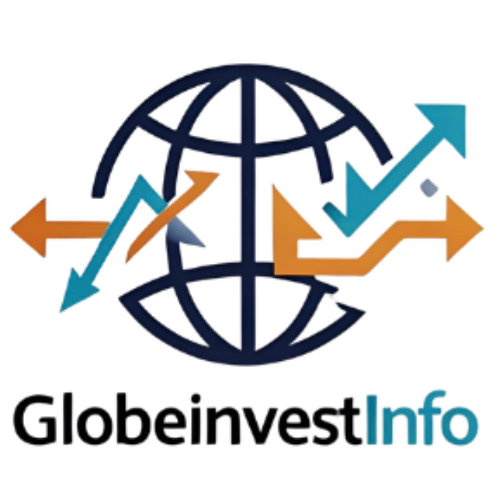Many self-employed Americans don’t have a workplace retirement plan. Without automatic contributions or employer matches, it’s easy to delay saving—or not start at all. Income fluctuations and business demands often take priority over personal retirement goals. The danger is that years can pass without meaningful progress toward financial security.
The good news is that there are several excellent retirement account options designed specifically for self-employed individuals. With a clear plan, you can build consistent savings and take full advantage of tax benefits.
Quick Read: What You’ll Learn
- The best retirement accounts for self-employed workers
- How to choose the right plan based on your needs
- Budgeting and saving strategies for variable income
- How to balance investing for retirement and business growth
Why Retirement Planning Matters for the Self-Employed
Being your own boss comes with freedom—but also full responsibility for your financial future. Without an employer to set up and manage a retirement plan, you must create your own. Income unpredictability, higher self-employment taxes, and lack of matching contributions make intentional planning essential.
Retirement Options for Self-Employed Americans
Traditional or Roth IRA
An IRA is a simple, accessible starting point.
- Traditional IRA: Contributions may be tax-deductible now; withdrawals in retirement are taxed.
- Roth IRA: Contributions are after-tax; withdrawals in retirement are tax-free.
For 2025, the contribution limit is $7,000, or $8,000 if age 50+.
Solo 401(k)
Designed for business owners with no employees other than a spouse, the Solo 401(k) allows you to contribute as both employee and employer. In 2025, total contributions can reach $70,000, and for ages 60–63 with catch-ups, up to $81,250. This option offers some of the highest contribution limits available.
SEP IRA
A SEP IRA is easy to set up and maintain. You can contribute up to 25% of your compensation or $70,000, whichever is less. Contributions are flexible from year to year, making it a good fit for variable income. If you have employees, contributions must be proportional for them as well.
SIMPLE IRA
For small businesses with up to 100 employees, the SIMPLE IRA allows both employer and employee contributions. Limits are lower than a Solo 401(k) but it’s easier to manage and has lower administrative requirements.
Keogh Plan
A more complex option that offers either defined-benefit or defined-contribution structures. While less common today, Keogh plans can work for higher earners who want a specific guaranteed benefit formula.
Choosing the Right Plan
| Goal/Need | Best Option | Why It Fits |
|---|---|---|
| Maximize contributions | Solo 401(k) | Highest limits, spouse can participate |
| Flexible contributions, simple | SEP IRA | Low setup cost, adjust annually |
| Ease of use, limited staff | SIMPLE IRA | Employer and employee contributions |
| Basic saving, tax flexibility | Traditional/Roth IRA | Low cost, easy to start |
| Structured benefit formula | Keogh plan | Good for high earners seeking predictability |
Budgeting & Saving Tips
- Pay yourself first: Treat retirement savings like a mandatory bill. Automate deposits into your retirement account each month.
- Plan for variable income: Save a higher percentage in months when business revenue is strong to cover slower months.
- Separate finances: Keep personal and business accounts distinct so you know exactly what you can allocate to retirement.
- Review annually: Reassess contribution levels, adjust for tax changes, and ensure your investment mix aligns with your retirement horizon.
Balancing Retirement Saving and Business Growth
Self-employed individuals often face the challenge of deciding between reinvesting profits into their business or saving for retirement. A balanced approach is usually best:
- Set a fixed percentage of profits for retirement.
- Use remaining funds for business growth initiatives.
- As your business becomes more stable, gradually increase retirement contributions.
Tax Advantages for the Self-Employed
One of the biggest benefits of self-employed retirement plans is the tax savings. Contributions to Traditional IRAs, Solo 401(k)s, SEP IRAs, and SIMPLE IRAs are generally tax-deductible, lowering your taxable income for the year. Roth contributions don’t reduce your taxes now but allow for tax-free withdrawals later.
Pros & Cons
| Pros | Cons |
|---|---|
| High contribution limits for Solo 401(k) and SEP IRA | Requires setup, paperwork, and adherence to rules |
| Tax benefits now or in retirement | Complexity increases with multiple accounts |
| Flexible contributions for irregular income | Requires discipline—no employer automatic contributions |
| Full control over investment choices | Must manage all aspects yourself |
FAQs
Q1: Can I contribute to an IRA while taking required minimum distributions (RMDs)?
Yes. If you have earned income, you can still contribute, even past RMD age.
Q2: How can I save with irregular income?
Allocate a percentage of each payment to retirement. Save more when income is high, and maintain a base level during slower months.
Q3: Which plan offers the highest savings potential?
The Solo 401(k) offers the highest contribution limits, making it ideal for those who can afford to save aggressively.
Q4: Should I open more than one retirement account?
Yes, in some cases. You can combine an IRA with a Solo 401(k) or SEP IRA for additional flexibility.
Conclusion
Retirement planning for self-employed Americans requires initiative, discipline, and the right account choice. Whether you start small with an IRA or go big with a Solo 401(k), the key is to start now, automate savings, and increase contributions as your income grows.
For more resources, visit our retirement planning guides or explore our full finance blog for strategies tailored to self-employed professionals.
Kelsey Johnson is a seasoned business writer specializing in strategy, marketing, and entrepreneurship. Her concise, insightful blogs help professionals drive growth and make smarter business decisions.

